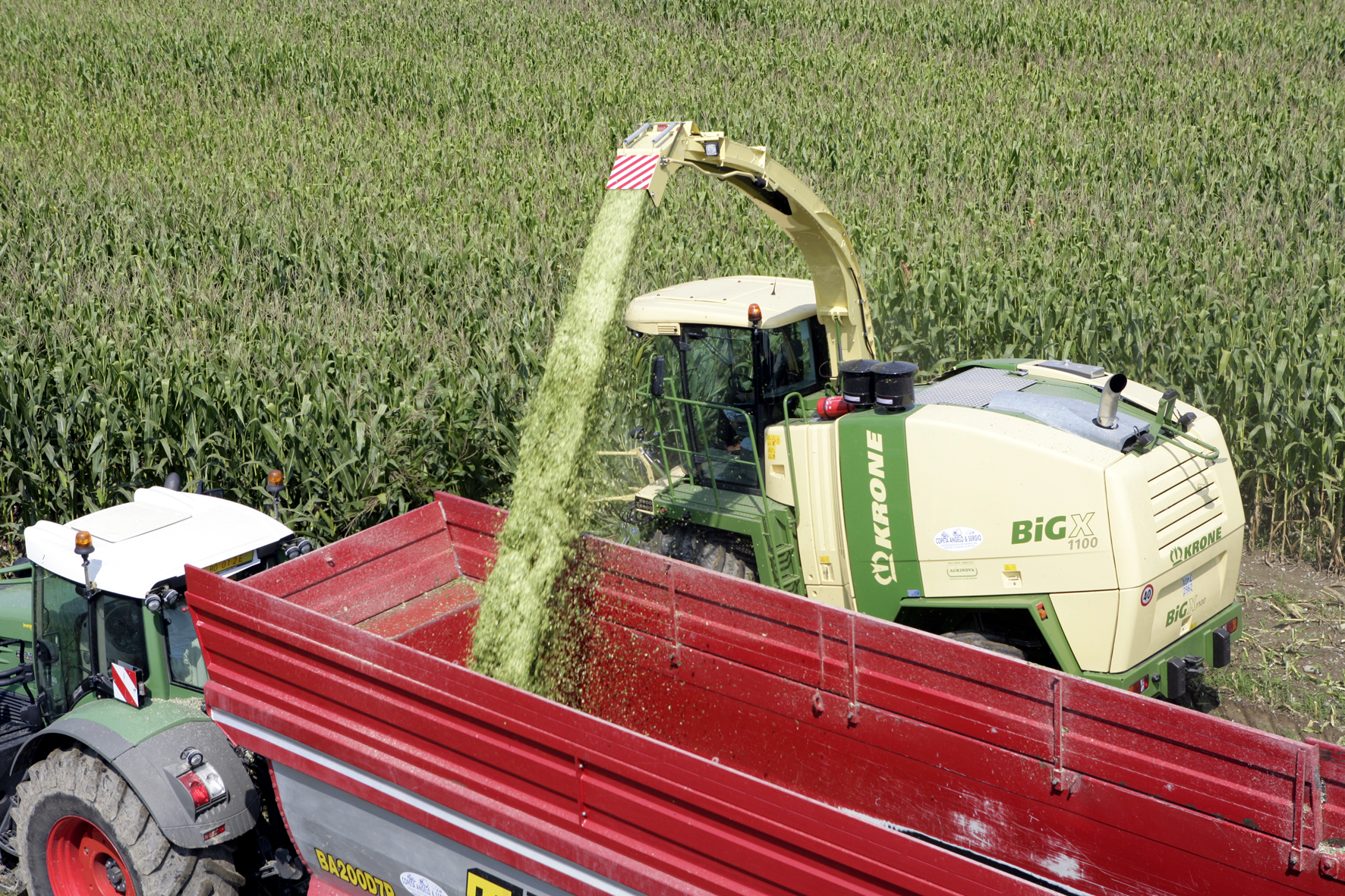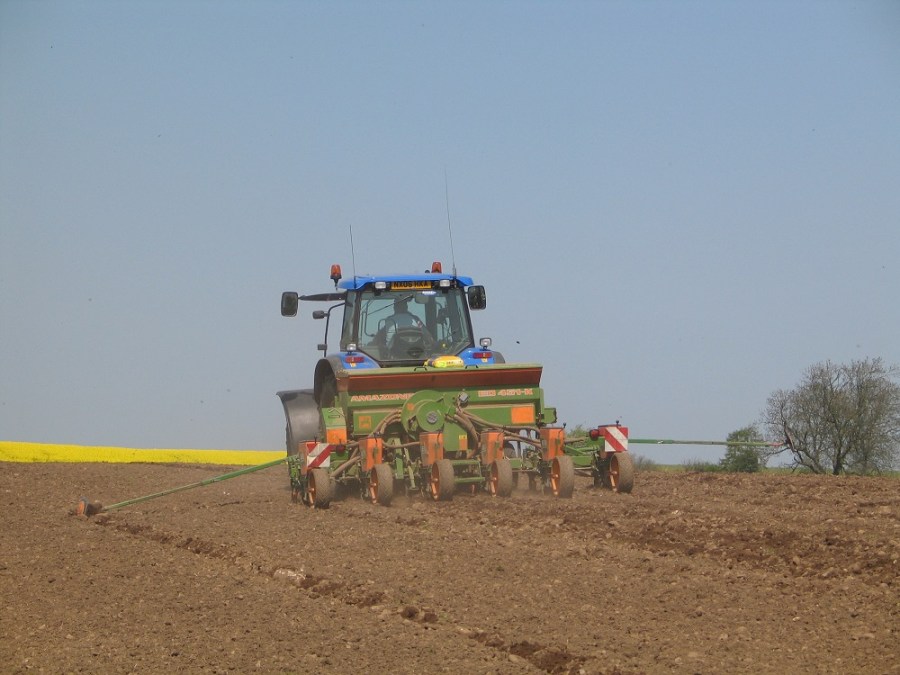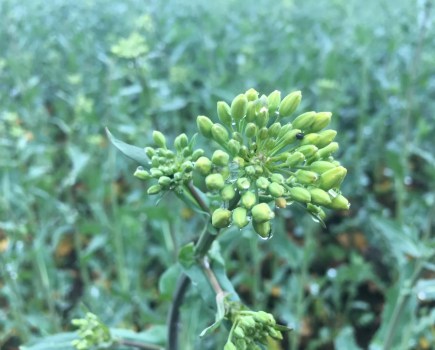The rising demand for maize as an anaerobic digester feedstock, particularly in the eastern counties, means that some growers will be sowing the crop for the first time this year. CPM asks a plant breeder for some tips on how to maximise returns.
By Rob Jones
Maize is a lazy rooter, so the priority when thinking about seedbed preparation is to alleviate any compaction. With roots capable of reaching down as deep as two metres, remedial sub-soiling if conditions are suitable is likely to produce a return on investment, recommends KWS’ John Burgess.
As far as agronomy is concerned, maize is a hungry crop, especially for potash with a 40t/ha harvest removing 220kg/ha of the nutrient. He recommends maintaining a potash index of 2-3, as well as a soil of around pH 6.5.
Attention to early weed control is another essential, because young maize plants are highly vulnerable to competition. “Use a combination post-emergence herbicide at 2-4 leaves. Later applications carry the risk of scorching from inter-row spray drift. The main threat is likely to come from annual meadowgrass, although reports of black nightshade and fat hen infestation are becoming more widespread,” he advises.

According to John Burgess, AD plants are tightening specs to improve their efficiency.
Another key recommendation is to wait until the soil temperature reaches 8⁰C and rising, for three consecutive days before sowing, recommends John.
“Maize seed should only go into the ground when conditions are right for establishment. Grain numbers are set from sowing to the six-leaf stage, and any early stress will affect the crop’s performance beyond recovery.”
Maturity classifications
Maize comes in a wide range of maturity classifications, with earlies and ultra-earlies requiring fewer days to reach harvest. Earliness refers to the maturity date of a variety, rather than its recommended planting date.
“Early and ultra-early varieties have traditionally been associated with a yield penalty of 10-15%, but this figure is diminishing as plant breeders have made far greater genetic progress on maize compared with any other UK crop over the past decade.
“It’s now possible to plant a variety and be confident that it’ll be ready to cut in Sept. Early-maturing varieties are advantageous in that they allow time to prepare for a following autumn crop and are useful where a large acreage is grown to help spread harvesting,” comments John.
Market specifications
Some anaerobic digester (AD) feedstock buyers are now offering forward contracts, but they’ve become more discerning, he explains. John believes that now the early and ultra-early types could best suit market requirements.
“Historically, growers have been paid on a freshweight basis, but dry matter is becoming increasingly important. Plant managers don’t want to effectively buy in water and some are specifying a dry matter of 33-35%, with penalties for crops falling outside that range. This is because maize of this specification will improve the AD plant’s gas yield.
“Medium-to-late varieties typically have a relatively low grain to stover (the leaves, stalks, and cobs of maize left in a field after harvest) ratio of 40:60, but earlies and ultra-earlies tend to have a higher grain figure, which produces a higher starch and dry matter content. The maincrop variety, KWS Fabregas for example, has a ratio of 60:40, while its much earlier counterpart, Autens KWS, contains the reverse, at almost 55% grain to 45% stover,” he explains.

Variety selection needs to consider farm factors, market requirements and harvesting capability.
“As plant breeders, we’re focusing on high dry matter production for energy markets and there’s been burgeoning interest in certain forage varieties, some of which also have very good figures.”
A growing number of buyers are also specifying chop length. “AD plants are looking for feedstocks with a high surface area and may in some cases apply a deduction if chop length exceeds about 12mm. I’d advise aiming for 10mm,” he suggests. “Apart from general good husbandry, other options for lifting crop dry matter are limited.”
John predicts that it’ll take about two seasons for a new maize grower to fine-tune crop performance. “The best advice is to speak to other producers in the region, because their local knowledge will be invaluable when choosing a variety and when it comes to making agronomic decisions,” he says.
FAO Rating
The FAO rating is an international standard used to characterise the maturity of hybrid maize varieties. It’s linked to the number of heat units that are required from drilling to harvest. Early varieties (FAO 150-160) require 2100 heat units to reach maturity, with a figure of 2400 for later varieties (FAO 180-210).
Late-maturing energy hybrids (FAO 240-260) require 2500-2800 heat units, although recommendations will depend on soil type and rainfall. The very late hybrid, KWS Kilomeris (FAO 260/270), requires close to 3000 heat units, while the maincrop KWS Fabregas, (FAO 220) requires 2600 units.
KWS offers a free, online heat units service to help with maize management decisions. Growers enter their postcode, to find local information on temperature which is updated weekly between April and Oct. The web tool also has an option which allows growers to select the FAO range suitable for their farm. More information on the KWS heat units service can be found at www.kws-uk.com




